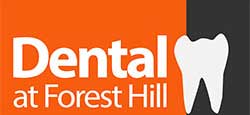Orthodontic evaluations for your child is crucial in ensuring proper dental development and addressing any potential issues early on. As a parent, knowing when to consider these evaluations can significantly impact your child’s oral health in the long term.
Early orthodontic evaluations are essential for your child's dental health, addressing issues early for lifelong oral wellness.
Introduction to Orthodontic Evaluations
Orthodontic evaluations involve assessing the alignment of teeth and jaws to identify any issues that may require intervention. Early evaluations are essential because they allow orthodontists to detect problems before they become more severe.
Understanding Orthodontic Issues in Children
Children may experience a range of dental problems, including overcrowding, misaligned bites, or irregular spacing between teeth. These issues can lead to discomfort, difficulty chewing, and even speech problems if left untreated. Signs that your child may need orthodontic treatment include difficulty biting or chewing, mouth breathing, thumb sucking beyond the age of five, and early or late loss of baby teeth.
Benefits of Early Orthodontic Evaluations
Early orthodontic evaluations offer several benefits, including the prevention of future dental problems. By addressing issues early on, orthodontists can guide proper jaw development, reduce the need for extensive treatments later in life, and improve overall oral health outcomes.
When to Schedule the First Orthodontic Visit
The American Association of Orthodontists recommends that children have their first orthodontic evaluation by the age of seven. However, some children may need to be evaluated even earlier, depending on individual circumstances such as dental development and family history of orthodontic issues.
What to Expect During the Evaluation
During the evaluation, the orthodontist will examine your child’s teeth, jaws, and facial structure. They may also take X-rays and photographs to assess dental alignment and identify any underlying issues. This evaluation helps the orthodontist develop a personalized treatment plan tailored to your child’s needs.
Treatment Options for Children
Orthodontic treatments for children may include braces, clear aligners, or other appliances designed to gradually move teeth into the correct position. The orthodontist will recommend the most appropriate treatment based on your child’s age, the severity of their orthodontic issues, and personal preferences.
Importance of Regular Orthodontic Check-ups
Regular check-ups are essential to monitor your child’s dental development and ensure that their treatment plan is progressing as planned. Orthodontists may make adjustments to the treatment plan as needed to achieve the desired results efficiently.
Addressing Concerns and Questions
Parents may have concerns about the cost, duration, and potential risks associated with orthodontic treatment for their children. It’s essential to discuss these concerns with the orthodontist to ensure that you have a clear understanding of the treatment process and its potential outcomes.
Beautiful Smile for Years to Come
Early orthodontic evaluations play a critical role in promoting proper dental development and addressing potential issues before they become more severe. By scheduling regular evaluations for your child, you can help ensure that they enjoy a healthy, beautiful smile for years to come.
FAQs
A: The American Association of Orthodontists recommends that children have their first evaluation by the age of seven.
A: Signs include difficulty biting or chewing, mouth breathing, thumb sucking beyond age five, and early or late loss of baby teeth.
A: The duration of treatment varies depending on the severity of the orthodontic issues but typically ranges from one to three years.
A: Many dental insurance plans offer coverage for orthodontic treatment, but it’s essential to check with your provider to understand the extent of coverage.
A: While orthodontic treatment is generally safe, there may be some risks, such as tooth decay, gum disease, or temporary discomfort during treatment. It’s essential to discuss any concerns with your orthodontist before starting treatment.


